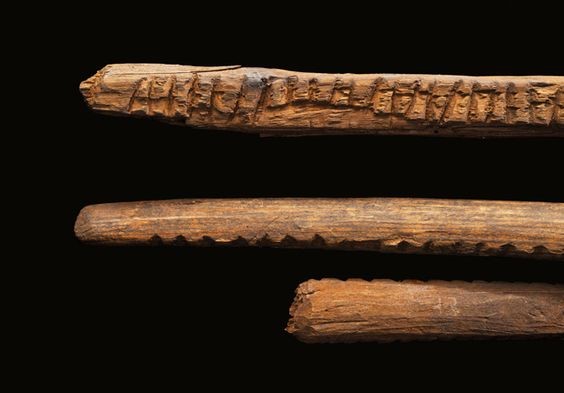
I thought I had just found a new podcast called Money by David Walliams, the famous British comedian and children’s author. Then I found out it is by David McWilliams, the less famous Irish economist and author of Money: A Story of Humanity. BBC Radio4 selected this as its book of the week recently, and began the podcast in 14 minute chunks (the book on Audible is 12 hours!):
BBC Sounds - Money by David McWilliams - Available Episodes
It is well worth a listen. By way of example, did you know that humans were using tally sticks more than 7,000 years ago? You may be asking what a tally stick is, so let’s get that out of the way first.
The tally stick is an ancient stick dating back to the Upper Palaeolithic period 44,000 years ago. It’s a piece of wood or bone where you can make marks that represent things you have exchanged with other people in the tribe or, more importantly, with other tribes.
David points to a Baboon’s femur (thigh bone) called the Lebombo bone that had such markings. There’s also the Ishango bone and others. These were the first basic ways of storing value and exchange, although it is not clear that the Palaeolithic tally sticks were clearly doing that or just cut to make them easier to use.
How did it work? Well, here’s a summary from the UK’s 12th century Exchequer:
At the top of the tally (stick) a cut is made, the thickness of the palm of the hand, to represent a thousand pounds; then a hundred pounds by a cut the breadth of a thumb; twenty pounds, the breadth of the little finger; a single pound, the width of a swollen barleycorn; a shilling rather narrower; then a penny is marked by a single cut without removing any wood.
Sounds complicated, but it’s something we have used for half a centamillennial.
The idea of the tally stick as an accounting tool, and later a currency, developed rapidly in Medieval Europe a thousand years ago, as currencies and trust became sparse. This is when the split stick appeared. The idea of the split wood, which developed in the early half of the last millennia, was that the buyer and seller each got a piece of the wood and could track and trace their trade using the two pieces. It was a form of trust.
The most prominent and best recorded use of the split tally stick or “nick-stick” being used as a form of currency was when Henry I introduced the tally stick system in medieval England in around 1100. The tally sticks recorded a payment of taxes, but soon began to circulate in a secondary discount market, being accepted as payment for goods and services at a discount since they could be later presented to the treasury as proof of taxes paid. Then tally sticks began to be issued in advance, in order to finance war and other royal spending, and circulated as “wooden money”.
Fascinating.
Chris M Skinner
Chris Skinner is best known as an independent commentator on the financial markets through his blog, TheFinanser.com, as author of the bestselling book Digital Bank, and Chair of the European networking forum the Financial Services Club. He has been voted one of the most influential people in banking by The Financial Brand (as well as one of the best blogs), a FinTech Titan (Next Bank), one of the Fintech Leaders you need to follow (City AM, Deluxe and Jax Finance), as well as one of the Top 40 most influential people in financial technology by the Wall Street Journal's Financial News. To learn more click here...

